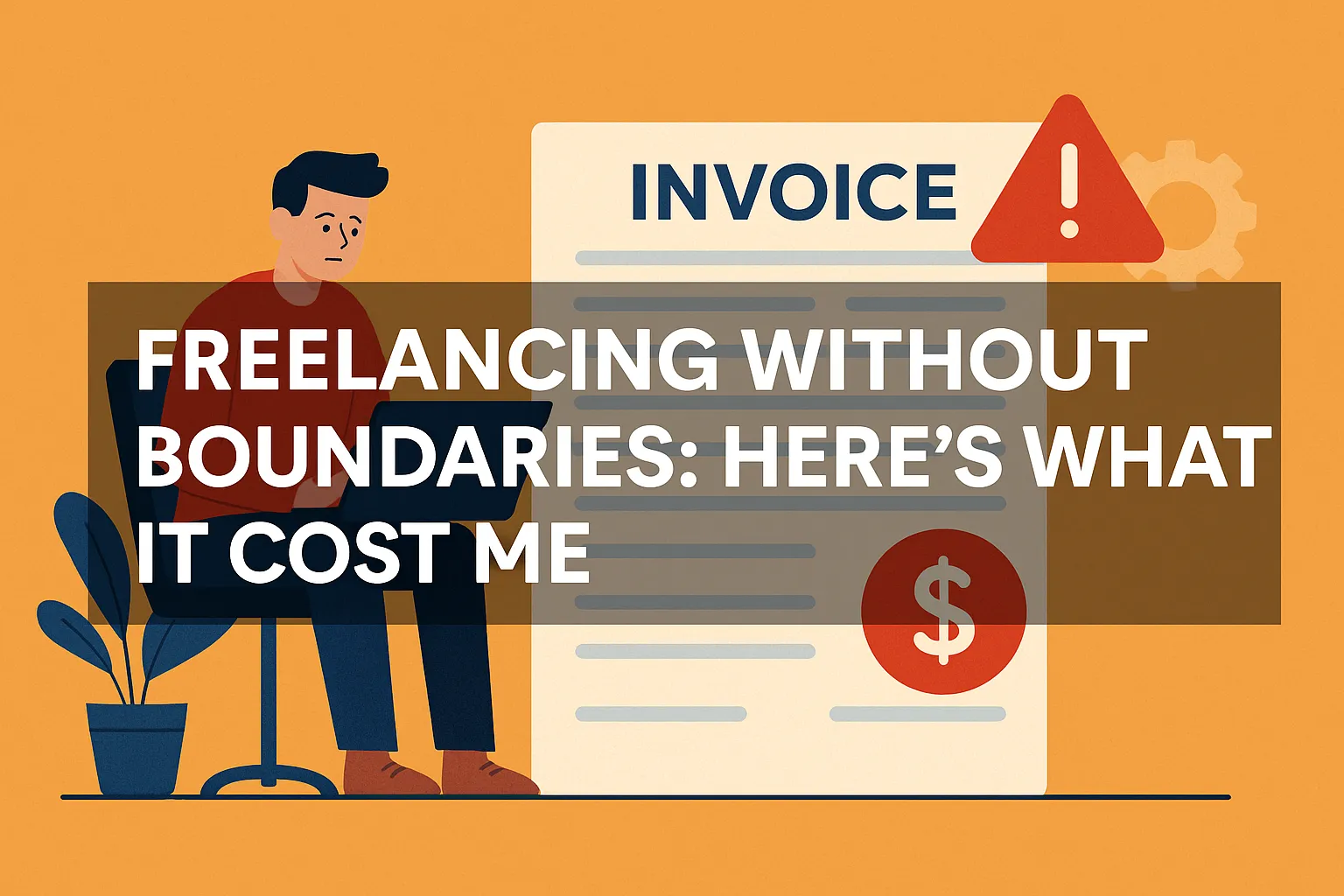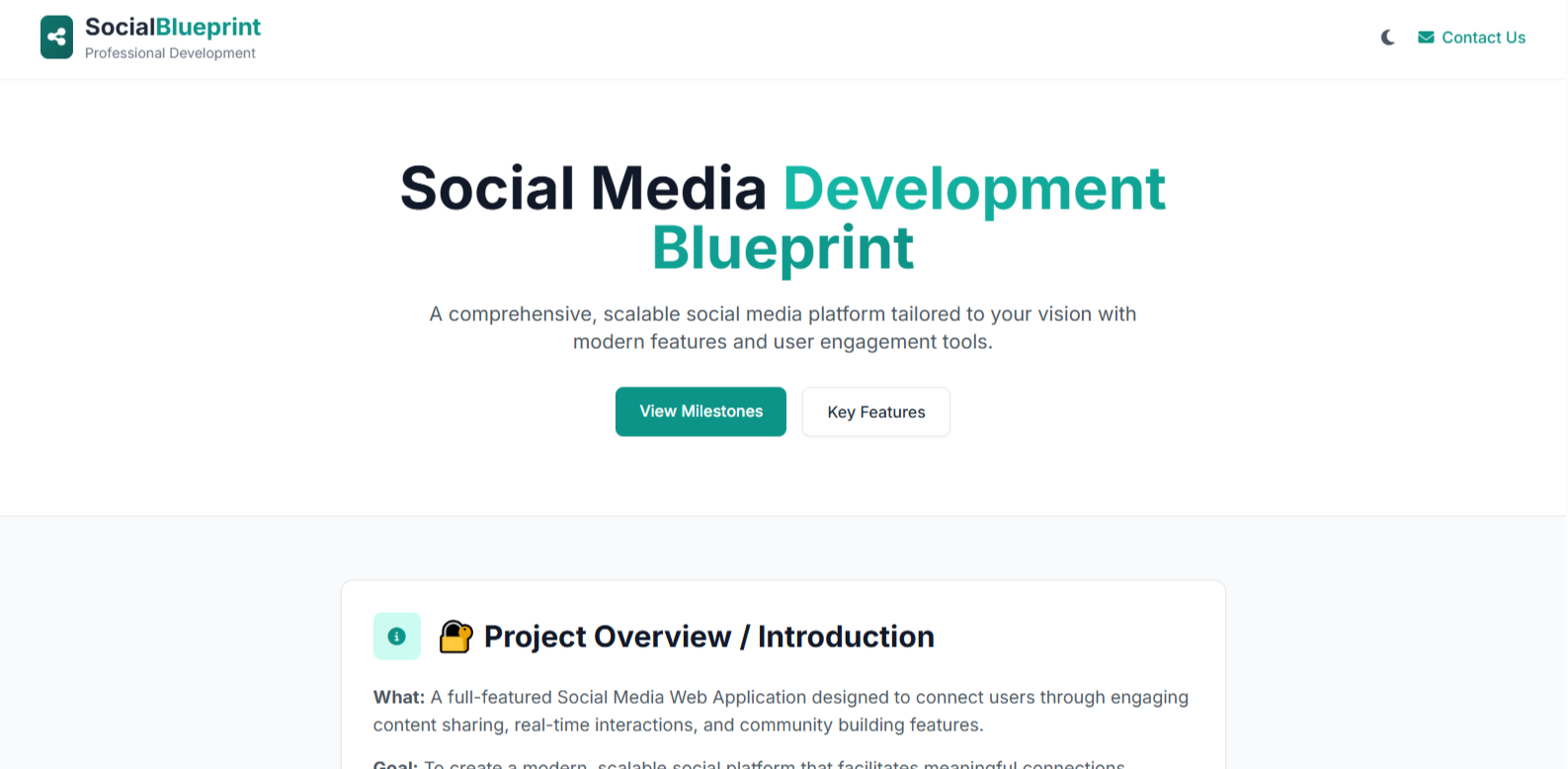Freelancing Without Boundaries: Here’s What It Cost Me

Not every bad gig feels bad at first… until the comma hits.
You know the one—that moment when you're offered a freelance project and your brain lights up like a Christmas tree. The scope sounds cool, the client drops buzzwords like AI and backend systems, and for a split second, you’re already mentally adding it to your portfolio. You’re in.
But then the comma hits.
“The payment is fixed, though…”
“…we need it done in two months, max.”
“…we don’t really do contracts.”
Suddenly, your excitement slams into a wall of quiet red flags. But if you're like I was, you tell yourself, “Eh, maybe it’s manageable.” You want to believe it’ll work out. You want the win. You need the experience. Or worse, you think pushing through proves something.
So you bite your tongue. You ignore your gut. And you jump in.
In the world of freelance development, especially in tech, you’re going to get offers that look shiny on the outside but are duct-taped disasters on the inside. You don’t always see it right away, but once that comma drops, pay attention. Because what you ignore at the start is what’ll cost you in the end.
This is a story about what happens when you don’t.
And what it taught me about boundaries, value, and protecting your damn peace.
The Story
It started with a phone call—an old friend from a tech group I used to hang with hit me up.
Someone was looking for a Django developer to build out the backend of a platform powered by AI, some machine learning fluff, and a user-facing dashboard. Pretty much the kind of challenge that lights a spark in my brain.
I was told it needed robust user auth, API integrations, some form of admin-level automation, and full deployment. The words “cutting-edge,” “fast-paced,” and “opportunity” were tossed around like confetti.
I was intrigued.
And that’s when the comma hit.
“The pay is fixed, though—no negotiation.”
“We need it launched in two months.”
“There’s no time for back-and-forths; just hit the ground running.”
I remember pausing. I knew deep down the deadline was aggressive, especially for a full-stack Django build with custom workflows and a third-party integration list that was already giving me a migraine.
But I told myself what too many devs tell themselves:
“Maybe I can power through it.”
“It’ll look good on my resume.”
“The exposure might lead to something bigger.”
Spoiler: it didn’t.
I jumped in headfirst. No contract. No clear deliverables. No revision limits. Just vibes.
The GitHub repo landed in my inbox, then a Figma file that was still being tweaked while I was building. I was juggling backend logic, API endpoints, and user role management while also being roped into decisions about UI/UX — things I wasn’t scoped to do, but I kept saying yes.
Why?
Because I wanted to deliver. Because I didn’t want to disappoint. Because I thought being overly flexible was professional.
Pressure mounted. We hit the two-month mark, and surprise—the project wasn’t done. Not because I wasn’t putting in work, but because the scope kept shifting. Every week there was a new feature idea, a pivot, or a “quick” tweak that bloomed into a three-day task.
Still, I pushed. I worked late nights, skipped weekends, and eventually deployed a fully functional MVP. It wasn’t perfect, but it was polished and battle-tested.
Then came the twist.
I was asked to prep a walkthrough of the architecture, how the backend was structured, how to scale it, where the automation scripts lived, and how the API tokens were being rotated. I figured it was for documentation and future devs.
Nope.
I later found out that meeting was basically my handover session.
They brought someone else in. I was dropped without so much as a thank-you email.
Oh, and that extra month I worked to “finish strong”? Unpaid.
No notice. No conversation. Just ghosted.
And the worst part? I didn’t even feel anger. I felt stupid. I had allowed this to happen. I didn’t set boundaries; I let the project define them for me.
It wasn’t just about bad pay—it was about what I let slide.
I didn’t protect my time, my energy, or my value.
That’s what it really cost me.
What I Learned the Hard Way (So You Don’t Have To)
Some of the hardest lessons don’t come from tutorials or certifications; they come from late nights, unpaid extras, and contracts you should have signed but didn’t. Here’s what I now live by as a freelance developer, especially if you're working with clients on backend development, AI projects, or anything remotely complex:
1. Always Get It in Writing
Look, I don’t care how “cool” the client seems or how fast they want to start; verbal agreements are worthless in this game.
Even if it’s just a basic freelance contract you threw together from a Notion template, it’s better than nothing. A signed agreement clearly outlines:
- Scope of work (so scope creep doesn’t eat your sanity)
- Timeline (including milestone checks)
- Payment terms (deposit, balance, late fees)
- Revisions and handovers (who owns what, and when)
Documentation protects both sides. It’s not just about trust, it’s about clarity. And clarity is currency in freelance.
2. Evaluate Pressure vs. Pay
Too often, we get dazzled by project titles like “AI platform” or “next-gen SaaS” but forget to ask:
Is the stress worth the check?
If you're being asked to build something mission-critical on a tight timeline and with a fixed, lowball budget, that’s a red flag disguised as “urgency.”
When the deliverables are stacked but the pay is stuck, it’s not an opportunity; it’s exploitation. Know the market rate for your skill level, especially in niche areas like machine learning integrations or API-heavy backends.
3. Your Timeline ≠ Their Timeline
Clients often come with deadlines that feel like they were chosen by spinning a wheel and yelling "ASAP." Your job isn’t to absorb their chaos. Your job is to bring order to the project.
If their timeline is trash, say so.
Offer alternatives. Break it into phases or milestones.
And if they won’t budge? Walk away.
Pushing yourself into a breakdown to meet someone else's fantasy schedule won’t win you loyalty. It’ll just drain your quality of work and life.
4. Protect Your Exit Strategy
One of the biggest mistakes I made was treating “handover” as an afterthought. Huge mistake.
Before you even start, define what happens at the end:
- What deliverables will be handed over (code, credentials, documentation)?
- Who owns the repo?
- Will you offer post-launch support—and is it paid?
Even for MVPs or quick builds, intellectual property (IP) ownership and access revocation must be part of your checklist. Don’t leave that door open. Too many devs get ghosted after delivering everything and then asked for “just one more thing” forever.
5. Standards Aren’t Optional
This is the heart of the matter.
If you don’t define your standards (your default rate, your process, your scope boundaries, your working hours), someone else will. And they won’t do it with your best interests in mind.
I used to think having flexible boundaries made me adaptable. Nah, it made me a doormat.
Now? I have non-negotiables:
- No project starts without a signed agreement.
- No meetings outside defined hours.
- No “urgent” work without “urgent” compensation.
Standards are what keep your freelance career sustainable. Without them, you’re just winging it until you burn out.
Freelancing isn’t just about writing good code; it’s about building a system that respects your time and talent.
Learn this now, or you’ll learn it the hard way.
Pro Tips Toolbox: A Freelance Agreement Template That Does the Talking For You
You don’t need to be a lawyer to look professional; you just need a solid structure, clear expectations, and a layout that doesn’t scream “I scraped this together in a panic.”
That’s why I’m sharing a resource I wish I had before I learned these lessons the hard way.
🚀 Kumotechs Freelance Deal Template
Designed with Tailwind CSS and Alpine.js, this template isn’t just pretty, it’s purposeful.
It’s a fully customizable HTML contract-style document that outlines:
- 📌 Project Scope: What’s included, what’s not
- ⏱️ Milestones & Timeframes: Crystal-clear deadlines
- 💵 Pricing Breakdown: Milestone-based billing with no ambiguity
- 🧾 Terms & Conditions: Your rules, spelled out
- ✨ Professional Look & Feel: Impress the client before you even write a line of code

👉 Check out the file content Here.
Use it for:
- Web development gigs
- Mobile app builds
- Social media automation tools
- AI-powered dashboards
- Basically, anything that smells like scope creep
This isn’t some vague “agreement doc.” It’s a living, breathing deal page, an interface that sets the tone from day one. It can be hosted, sent as a static file, or used as a proposal preview before contract signing.
And yes, it’s fully editable. So when the next client hits you up with “How soon can you start?”, you can hit back with:
“Here’s my standard deal page. Let’s talk details.”
No awkward back-and-forth. No last-minute guessing. Just clear, confident boundaries.
Keep your energy for the build, not the backpedaling.
Conclusion:
I don’t regret the project; I regret not protecting myself. That was the real lesson.
The late nights, the scope creep, the awkward silence after handover… all of it could have been avoided if I had just drawn the line earlier. If I had paused, defined the scope, and required a signed agreement instead of just rushing to “get started.”
Today, I don’t touch a line of code until the terms are clear, the scope is locked, and my value is respected.
That’s not ego, that’s survival.
As a freelancer, your boundaries are your business plan. You’re not just writing code or designing pages; you’re running a one-person digital agency, and your first client is yourself.
So take it from me: set your standards before the world sets them for you.
If you’ve ever been burned freelancing, share your story in the comments or via our contact email or a message on our contact page. Your story might be featured on one of our future posts. 😉
Let’s build a smarter, more protected creative community one boundary at a time.
